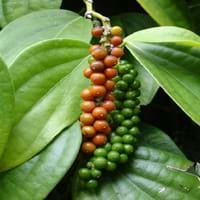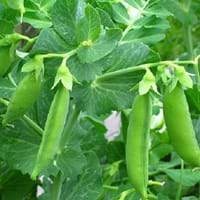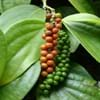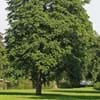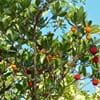Life Span
Perennial
Annual
Type
Broadleaf Evergreen, Vines
Vegetable
Origin
India, Indonesia, Southeast Asia, Southern Asia
Mediterranean
Types
Red pepper, Orange pepper
Sugar Bon pea, Super Sugar Snap bean
Habitat
Moist Soils, orchards, Temperate Regions
Fields, Loamy soils
USDA Hardiness Zone
8-15
Not Available
AHS Heat Zone
12 - 1
12-1
Sunset Zone
H1, H2, 8, 9, 14, 15, 16, 17, 18, 19, 20, 21, 22, 23, 24
A1, A2, A3, H1, H2, 1a, 1b, 2a, 2b, 3a, 3b, 4, 5, 6, 7, 8, 9, 10, 11, 12, 13, 14, 15, 16, 17, 18, 19, 20, 21, 22, 23, 24
Habit
Clump-Forming
Vining/Climbing
Flower Color
Lemon yellow
White, Pink, Lavender
Flower Color Modifier
Bicolor
Bicolor
Fruit Color
Red, Green, Light Green
Green
Leaf Color in Spring
Light Green, Dark Green
Green, Sea Green, Gray Green
Leaf Color in Summer
Light Green
Not Available
Leaf Color in Fall
Light Green, Dark Green
Green, Blue Green, Gray Green
Leaf Color in Winter
Light Green, Dark Green
Green, Blue Green, Gray Green
Leaf Shape
Circular cordate
Egg-shaped
Plant Season
Spring, Summer, Fall, Winter
Spring, Fall, Winter
Sunlight
Full Sun, Partial Sun, Partial shade
Full Sun, Partial Sun
Type of Soil
Loam, Sand
Clay, Loam, Sand
The pH of Soil
Acidic, Neutral, Alkaline
Neutral
Soil Drainage
Average
Well drained
Bloom Time
Not Available
Early Spring, Spring, Late Spring, Fall, Late Fall, Early Winter, Winter, Late Winter
Tolerances
Drought
Dry Conditions, Salt and Soil Compaction, Variety of soil types
Where to Plant?
Container, Ground
Ground
How to Plant?
Seedlings, Stem Planting, Vegetative Reproduction
Seedlings
Plant Maintenance
Medium
Medium
Watering Requirements
Do Not over Water, Sprinkle water over foliage, Water every two or three days during warmer months
Allow to dry out slightly between watering, Needs watering once a week
In Summer
Lots of watering
Consistently
In Spring
Moderate
Adequately
In Winter
Average Water
Less Watering
Soil pH
Acidic, Neutral, Alkaline
Slightly Acidic
Soil Type
Loam, Sand
Clay, Loam, Sand
Soil Drainage Capacity
Average
Well drained
Sun Exposure
Full Sun, Partial Sun, Partial shade
Full Sun, Partial Sun
Pruning
A hard prune may be necessary if the plant becomes woody, Remove dead branches, Trim each shoot back to the first set of leaves
No pruning needed, Prune in flowering season, Remove damaged leaves
Fertilizers
10-10-10 diluted liquid fertilizer, All-Purpose Liquid Fertilizer, Do not let fertilizers touch the leaves
Compost, fertilize in winter
Pests and Diseases
Aphids, Beetles, Root rot, Rust, Scab
Downy mildew, Gall Insects, Leaf curl, Peach Leaf Curl, Powdery mildew, Root rot
Plant Tolerance
Heat Tolerance, Humidity, Salt and Soil Compaction
Light Frost
Flowers
Not Available
Showy
Flower Petal Number
Single
Single
Foliage Texture
Medium
Medium
Foliage Sheen
Matte
Matte
Attracts
Aphids, Leafminer, Snails, Squirrels
Not Available
Allergy
Oral Allergy
Diarrhea, Intestinal gas
Aesthetic Uses
Beautification, Cottage Garden, Decorating walls
As decorated salad
Beauty Benefits
Acne, Blackheads
Remove blemishes, Skin Problems
Environmental Uses
Fixes Nitrogen, Insect Repellent
Fixes Nitrogen, Food for animals, Very little waste
Medicinal Uses
Acid Reflux, Dysentry, Healthy teeth, Inflammation, Oral health
No Medicinal Use
Part of Plant Used
Dried seeds
Leaves, Seeds
Other Uses
Culinary use, Oil is used for aromatherapy, Used in herbal medicines
Cosmetics, Making Shampoo, Used as a nutritious food item, Used As Food
Used As Indoor Plant
Yes
No
Used As Outdoor Plant
Yes
Yes
Garden Design
Container, Feature Plant, Hedges, Screening / Wind Break, Tropical
Container, Edible, Herb, Vegetable, Vine
Botanical Name
Piper nigrum
PISUM sativum
Common Name
Peppercorn, Piper, Black pepper
Garden Pea
In Hindi
काली मिर्च
चीनी मटर
In French
Piper nigrum
Erbse
In Spanish
Poivrier noir
guisante
In Greek
μαύρο πιπέρι
μπιζέλι
In Portuguese
Pimenta-preta
ervilha
In Polish
Pieprz czarny
groch
In Latin
nigrum piperis
pea
Phylum
Magnoliophyta
Magnoliophyta
Class
Magnoliopsida
Magnoliopsida
Family
Piperaceae
Fabaceae
Clade
Angiosperms, Monocots
Dicotyledonous
Tribe
Not Available
Not Available
Subfamily
Not Available
Not Available
Number of Species
Not Available
Importance of Black pepper and Sugar Snap Pea
Want to have the most appropriate plant for your garden? You might want to know the importance of Black pepper and Sugar Snap Pea. Basically, these two plants vary in many aspects. Compare Black pepper and Sugar Snap Pea as they differ in many characteristics such as their life, care, benefits, facts, etc. Every gardener must at least have the slightest clue about the plants he wants to plant in his garden. Compare their benefits, which differ in many ways like facts and uses. The medicinal use of Black pepper is Acid Reflux, Dysentry, Healthy teeth, Inflammation and Oral health whereas of Sugar Snap Pea is No Medicinal Use. Black pepper has beauty benefits as follows: Acne and Blackheads while Sugar Snap Pea has beauty benefits as follows: Acne and Blackheads.
Compare Facts of Black pepper vs Sugar Snap Pea
How to choose the best garden plant for your garden depending upon its facts? Here garden plant comparison will help you to solve this query. Compare the facts of Black pepper vs Sugar Snap Pea and know which one to choose. As garden plants have benefits and other uses, allergy is also a major drawback of plants for some people. Allergic reactions of Black pepper are Oral Allergy whereas of Sugar Snap Pea have Diarrhea and Intestinal gas respectively. Having a fruit bearing plant in your garden can be a plus point of your garden. Black pepper has no showy fruits and Sugar Snap Pea has showy fruits. Also Black pepper is not flowering and Sugar Snap Pea is not flowering . You can compare Black pepper and Sugar Snap Pea facts and facts of other plants too.
